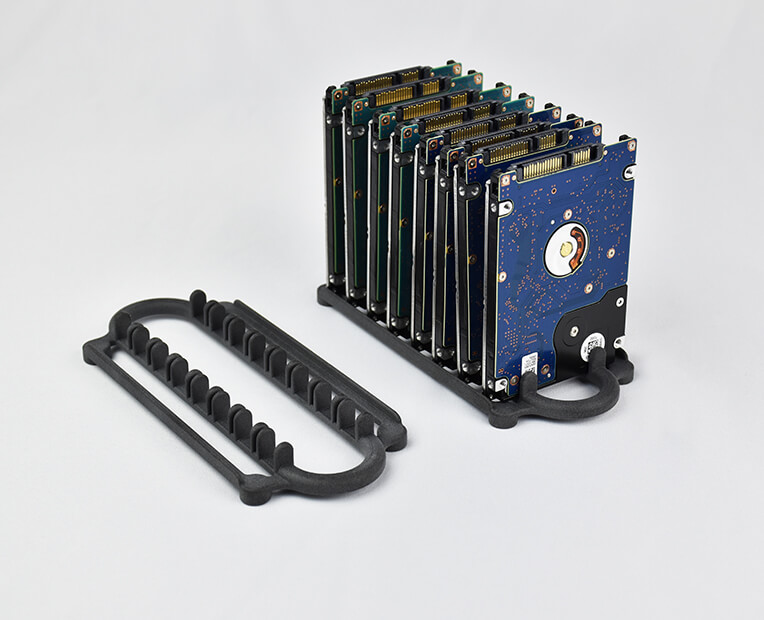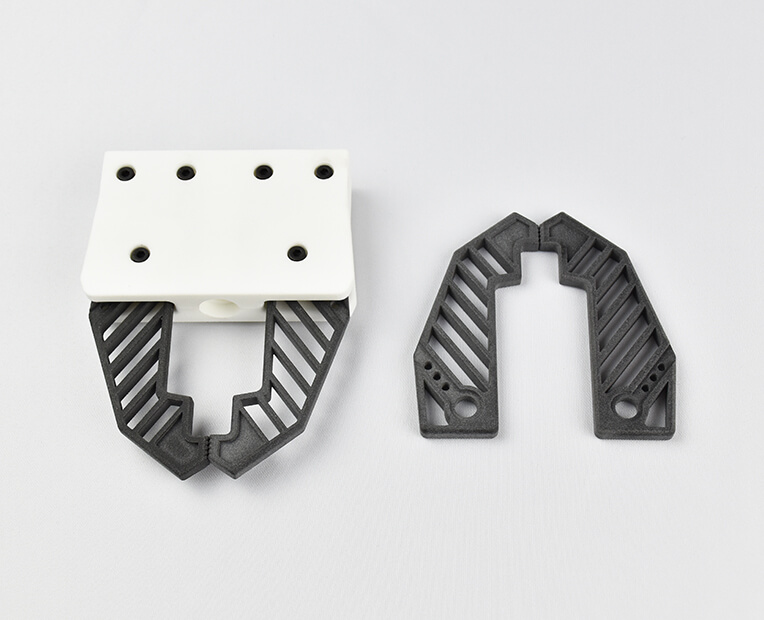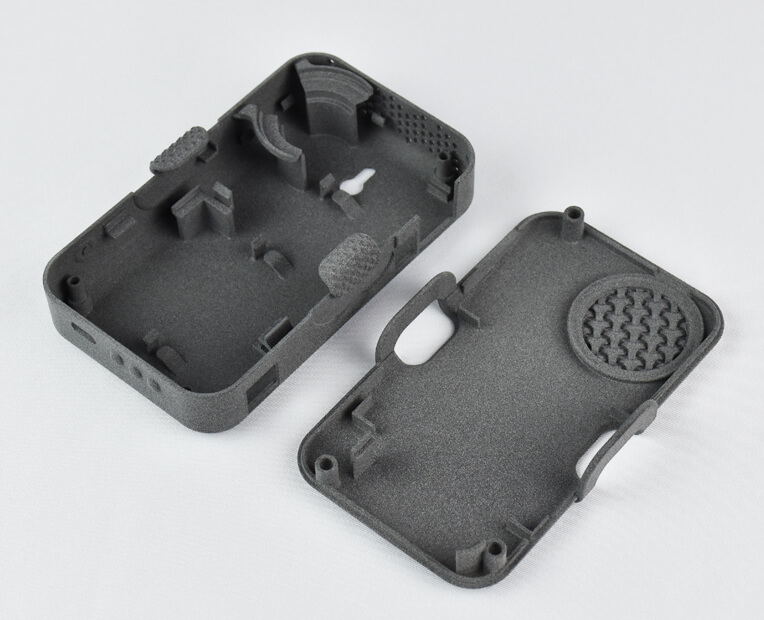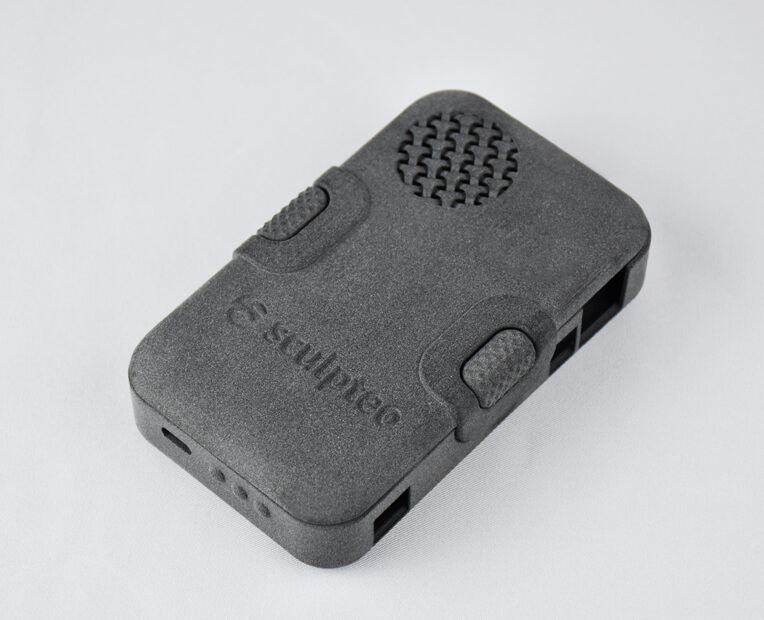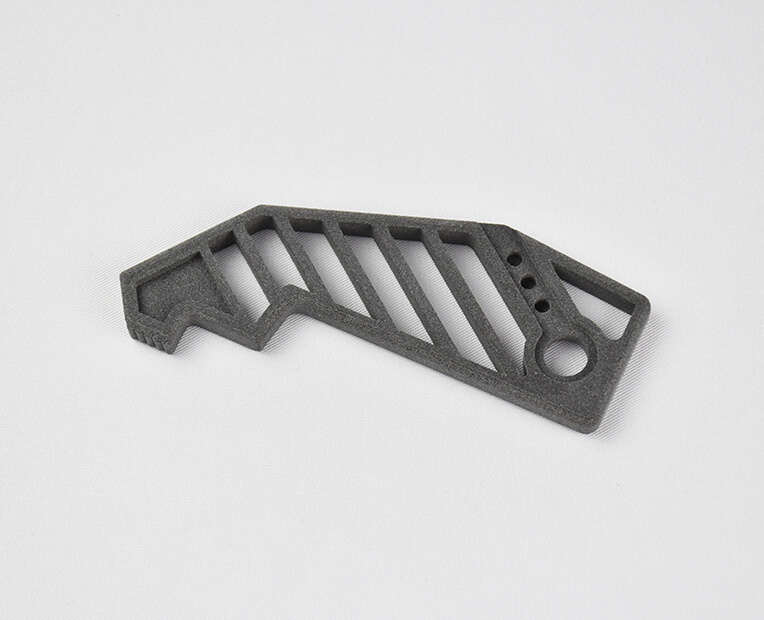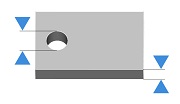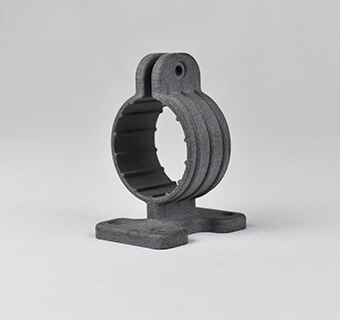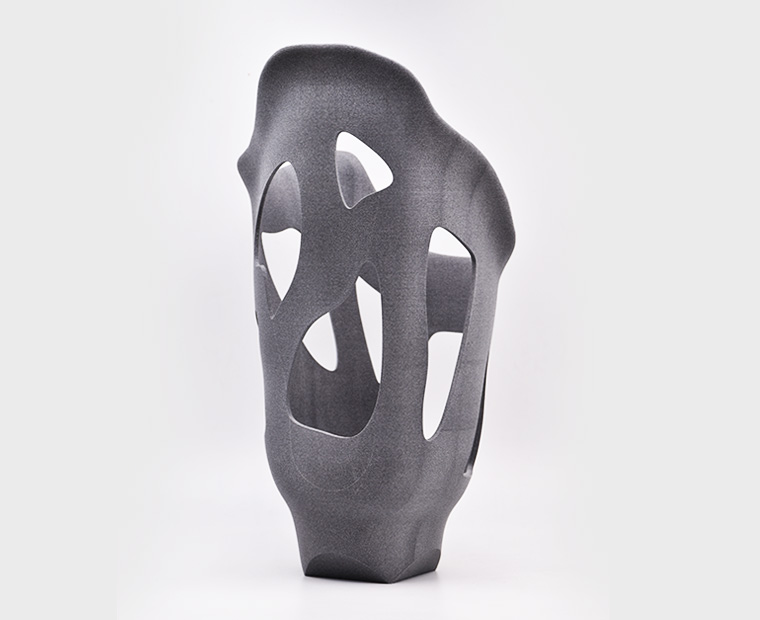Home » Matériaux pour Impression 3D sur mesure » Technologie SLS » Ultrasint® PA11 ESD
Matériau d'impression 3D Ultrasint® PA11 ESD
Vous avez besoin d'imprimer en 3D avec un matériau aux propriétés ESD ? Le service d'impression 3D plastique ESD de Sculpteo est fait pour vos besoins. Notre Ultrasint® PA11 ESD est un matériau d'impression 3D résistant doté de propriétés de décharge électrostatique. Découvrez les avantages et les applications de ce matériau plastique à décharge électrostatique.
Couleurs
Caractéristiques
Guide de matériau du Ultrasint® PA11 ESD
Qu’est ce que l’Ultrasint® PA11 ESD ?
L’Ultrasint® PA11 ESD un matériau en poudre, bio-sourcé comprenant des propriétés de décharges électrostatique permettant d’augmenter la sécurité des processus dans le secteur de l’éléctronique. Grâce à des propriétés mécaniques intéressantes, ce matériau offre de nouvelles possibilités pour une large gamme d’applications, particulièrement dans le secteur de l’électronique.
Vos pièces seront imprimées en 3D en utilisant une poudre durable. Les pièces imprimées en 3D avec l’Ultrasint® PA11 ESD ne se chargent pas en électricité statique indésirable, et protège vos composants et systèmes sensibles. Ce matériau permet également de réduire le risque de pannes et de dommages induits par l’électrostatique. Si vous prototypez ou produisez un projet pour lequel la composante antistatique est importante, le matériau PA11 est celui qu’il vous faut.
Les pièces imprimées en Ultrasint® PA11 ESD sont imprimées avec la technique de Frittage Sélectif par Laser. Afin de bénéficier de toutes les propriétés techniques de ce matériau, veillez à bien respecter le guide de design avant d’envoyer votre modèle 3D à l’impression.
Quelles sont les applications possibles pour ce matériau ?
Avec le matériau PA11 vous allez pouvoir fabriquer facilement l’ensemble de vos prototypes et pièces finales antistatiques. En effet, la résistivité de surface de l’Ultrasint® PA11 ESD est inférieure à celle des matériaux de dissipation électrostatique traditionnels.
Ce matériau présente également de bonnes caractéristiques thermiques et mécaniques.
- Boîtiers électroniques
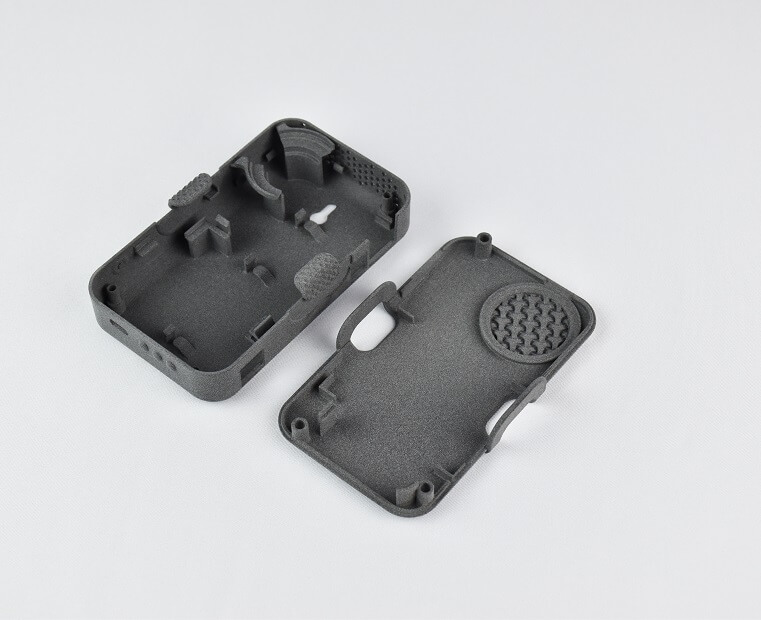
L’Ultrasint® PA11 ESD vous permet de manipuler vos composants électroniques avec un niveau de sécurité plus élevé puisque le matériau n’accumule pas d’électricité statique et peut donc entrer en contact avec des composants électroniques sans risquer de les endommager.
- Fixations pour l’électronique
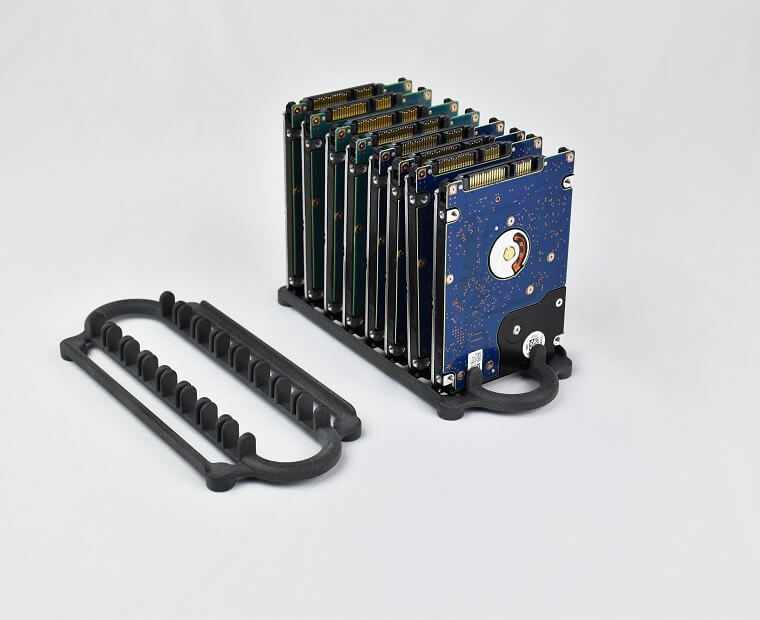
L’Ultrasint® PA11 ESD est le matériau optimal pour la construction rapide et durable de gabarits et fixations pour l’industrie de l’électronique.
- Outillage
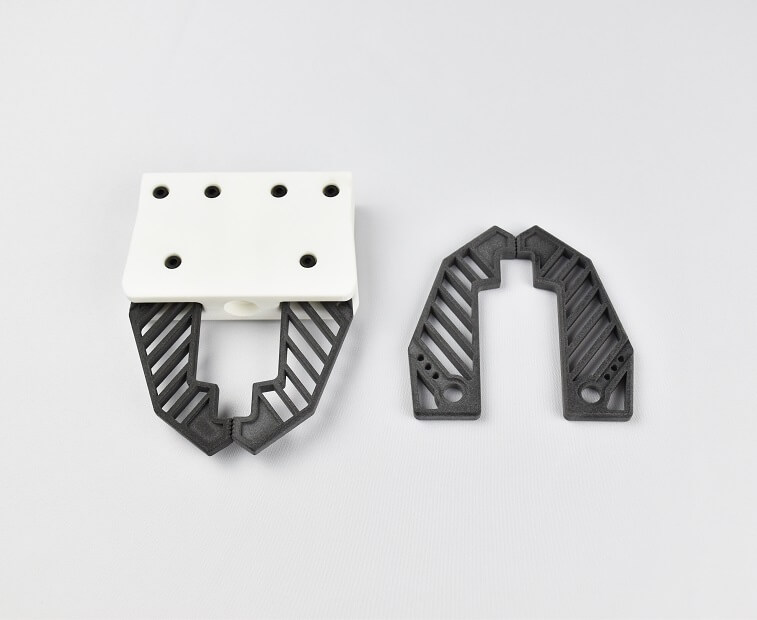
Commencez à optimiser votre processus d’outillage et de création de pièces de machine en utilisant l’impression 3D. Le matériau Ultrasint® PA11 ESD possède des propriétés mécaniques intéressantes comme une bonne résistance à la traction mais également une élasticité élevée qui vous permettra de créer des outils efficaces.
Prix et délais
Le prix de votre impression 3D est calculée automatiquement au moment où vous transférez votre fichier sur notre site. Le prix changera en fonction de vos modifications, si vous changez de matériau, de finition, si vous modifiez la taille, utilisez l’évidemment, etc. En effet, nos prix se basent sur différent facteurs, incluant le volume final, la taille, pour ne citer que ceux-là.
Gardez à l’esprit que l’ajout d’une finition, un délai supplémentaire sera nécessaire. Votre date de livraison sera également calculée automatiquement une fois votre fichier 3D transférez sur notre site, et sera mis à jour à chacune de vos modifications.
Pour plus d’informations consultez notre page prix et délais.
Quel est le procédé d'impression 3D pour ce matériau ?
Sculpteo utilise le procédé de Frittage sélectif par Laser pour l’impression 3D de plastique PA11 ESD.
L’impression 3D se fait couche par couche par frittage de poudre. Un rouleau balaie le bac d’impression pour déposer une fine couche de poudre de polyamide puis le laser de notre imprimante 3D soude les grains de poudre qui vont former votre objet en les chauffant sans mener jusqu’à la fusion. Le processus est répété jusqu’à l’obtention d’un bloc de poudre, au sein duquel se trouve votre objet.
Taille maximum | 150x 200x 250 mm |
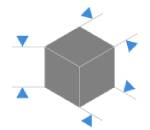
La taille maximum de vos modèles sont limités par la taille physique de l’imprimante 3D. |
Le processus d’impression 3D peut donner un effet « upskin » ou « downskin » en fonction de la technologie utilisée. L’upskin apparait sur la face supérieure de l’objet et donne un effet concave, tandis que downskin est présent sur la partie inférieure et donne un effet convexe. Ceci est important à prendre en compte lorsque vous définissez l’orientation de votre modèle 3D. Si votre design est affecté par l’upskin ou le downskin, définissez l’orientation d’impression à l’avance et nous ferons de notre mieux pour la respecter. Si cela n’est pas possible, nos techniciens choisiront la solution la plus adaptée.
| Epaisseur de couche | 100µm |
| Précision | ± 0.4% (minimum ± 0.4 mm) |

| Epaisseur minimale pour des parois | 0.7mm |

| Epaisseur minimale pour les éléments filaires avec support | 0.7mm |
| Epaisseur minimale pour les éléments filaires sans support | 1mm |

Largeur et hauteur minimales conseillées pour les détails | Embossage: 0.5 mm
|
| Ratio longueur/profondeur minimum | 1/1
|
La finesse des détails dépend de la résolution de notre imprimante 3D, mais aussi de la solidité des zones détaillées lors du nettoyage après impression. Nous vous invitons donc à respecter les tailles minimales indiquées ci-dessus pour vos détails et vos textes. Pour assurer un meilleure visibilité, la largeur de vos détails doit être au moins aussi importante que leur profondeur.
| Inclusion de volumes ? | Oui |
| Articulations ? | Oui |

Notre matériau vous permet d’imprimer vos designs les plus complexes. Ce matériau est idéal pour imprimer un objet articulé ou contenant des inclusions de volumes. Vous pouvez tout à fait imprimer des modèles du type côte de maille, chaîne, et plus encore.
| Espacement minimum entre parois fixes | 0.5 mm |
| Jeu fonctionnel minimum | 0.5 mm |

L’impression 3D requiert qu’un espace de jeu suffisamment important soit laissé afin de nettoyer la poudre de polyamide présente entre deux surfaces. Cela permet d’éviter que ces parois ne restent soudées l’une à l’autre. L’espacement minimum est notamment nécessaire pour les parties qui seront articulées, mais l’est également pour l’espacement entre les parois fixes. Il est donc nécessaire de prévoir un espace supérieur à 0.5 mm entre chacune de vos surfaces.
Cet espace doit être d’autant plus important que votre pièce est grande. En effet, plus votre pièce est massive, plus les zones chauffées par le laser sont importantes : la poudre présente au niveau du jeu risque d’être soudée par propagation de la chaleur et donc impossible à extraire lors du dépoudrage. Par ailleurs, il est important de prévoir un espace permettant d’extraire la poudre non fusionnée de la zone d’articulation : dans certains cas, il est nécessaire d’ajouter des trous pour permettre cet évidement.
| Evidement ? | Oui : 5mm |
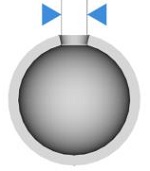
Evider vos pièces vous permet de les rendre plus légères, et de réduire le prix d’impression. Il est possible d’évider votre objet directement sur notre site. Pour cela, il vous suffit de télécharger votre fichier 3D puis de cliquer sur l’onglet “Optimiser” afin d’activer la fonctionnalité “Evider”.
Il est important de prévoir au moins deux trous afin d’extraire la poudre non fusionnée, et les placer à des endroits stratégiques pour l’évidement. Les dimensions minimales de ces trous sont calculées automatiquement sur notre site.
Value (Dry) | Value (Cond) | Method | |
Tensile Strength | 65 MPa (X) / 55 MPa (Z) | 55 MPa (X) / 47 MPa (Z) | ISO 527-2 (23°C) |
Tensile Modulus | 3150 MPa (X) / 2150 MPa (Z) | 2300 MPa (X) / 1550 MPa (Z) | ISO 527-2 (23°C) |
Elongation at Break | 20% (X) / 23% (Z) | 22% (X) / 31% (Z) | ISO 527-2 (23°C) |
Tensile Strength | 38 MPa (X) / 30 MPa (Z) | 34 MPa (X) / 27 MPa (Z) | ISO 527-2 (80°C) |
Tensile Modulus | 900 MPa (X) / 550 MPa (Z) | 800 MPa (X) / 500 MPa (Z) | ISO 527-2 (80°C) |
Elongation at Break | 37% (X) / 49% (Z) | 35% (X) / 47% (Z) | ISO 527-2 (80°C) |
Charpy Impact unnotched | 6.6 kJ/m² (X) / 4.7 kJ/m² (Z) | 7.3 kJ/m² (X) / 5.3 kJ/m² (Z) | ISO 179-1 |
HDT B (0.45 MPa, dry) | 186°C | 186°C | ISO 75-2 |
- Fiche technique
- Fiche technique du fabricant – Les valeurs ne sont pas garanties – Veuillez nous contacter si vous souhaitez en savoir plus sur les propriétés que nous avons testées.
Imprimez en 3D avec l'Ultrasint® PA11 ESD dès maintenant !
Chaque projet est unique. Que vous ayez besoin de prototypes en plastique ESD, de pièces de production ou de conceptions personnalisées, nos services d’impression 3D peuvent être adaptés à vos besoins spécifiques. Nous travaillons en étroite collaboration avec vous pour vous proposer des solutions qui correspondent à votre vision.
Grâce à notre expertise, notre technologie et notre engagement envers la conformité ESD, nous sommes votre partenaire de confiance pour les projets liés aux composants et produits en plastique ESD. Contactez-nous dès aujourd’hui et embarquez pour un voyage vers des solutions ESD imprimées en 3D qui répondent exactement à vos spécifications. Ne faites aucun compromis sur la qualité lorsqu’il s’agit de plastique ESD. Choisissez-nous et découvrez l’avenir de l’impression 3D pour les matériaux à décharge électrostatique.


 Connexion avec Google
Connexion avec Google Connexion avec Facebook
Connexion avec Facebook